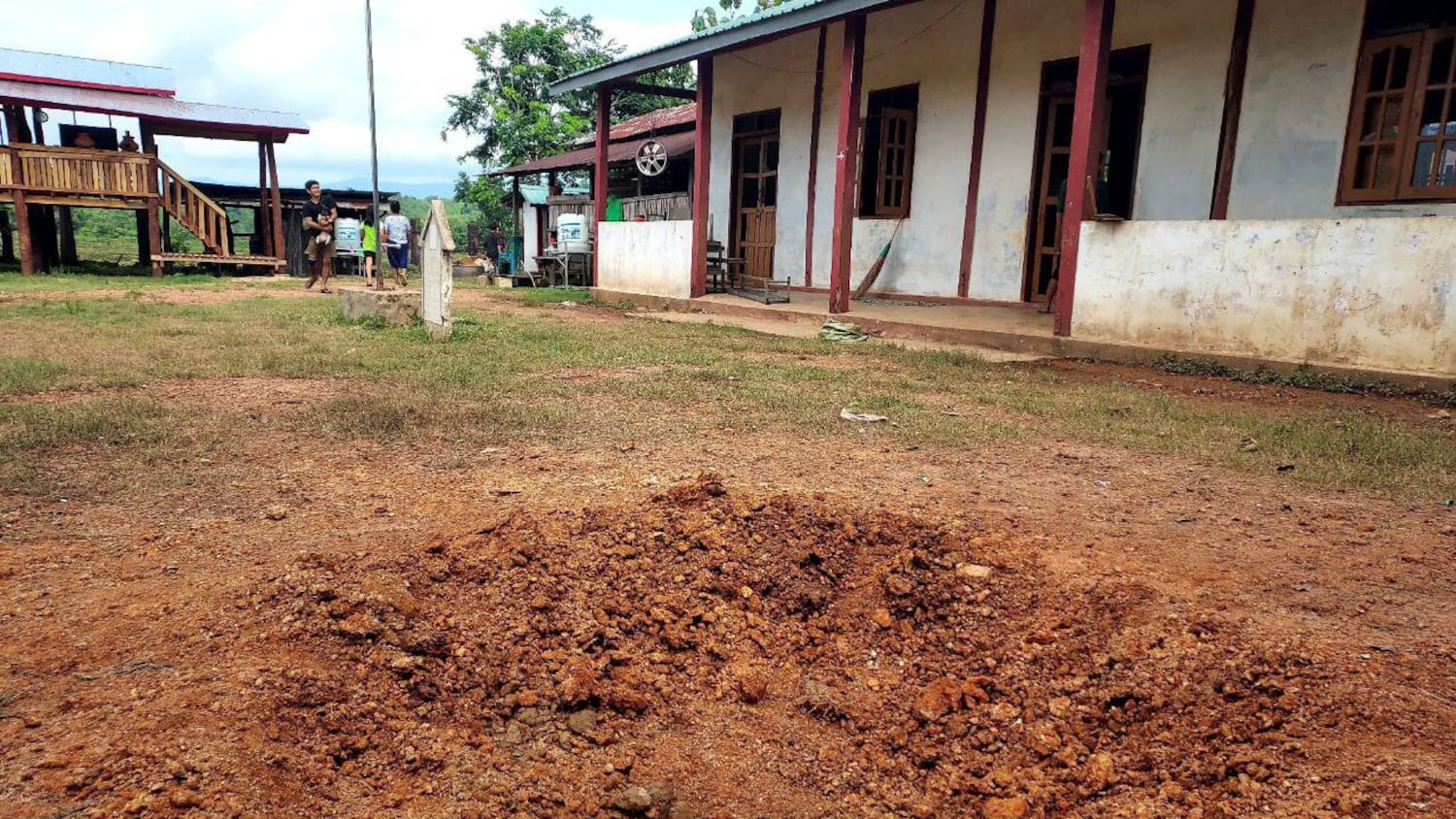Read RFA coverage of this story in Burmese.
Junta forces have conducted nearly 200 air strikes on schools across Myanmar since the military seized power in a February 2021 coup d’état, according to a Radio Free Asia tally.
The air strikes destroyed 146 educational facilities, including universities, public schools and monastic schools, in Sagaing, Magway and Mandalay regions, and in Kayin, Rakhine, Chin, Kachin and Kayah states, which have seen fighting by resistance forces that oppose junta rule.
Myanmar Witness, a London-based human rights watchdog, reported in July that 64 people had been killed and 106 injured in attacks on schools over the past three years, and that structures sustained severe damage from air strikes.
The junta often claims that resistance fighters known as People’s Defense Forces, or PDFs, hide in the schools, though residents say they do not accept this justification.
But Banyar, the director of the Karenni Human Rights Group in Kayah state in eastern Myanmar, said the junta intentionally targets schools.
“It has been found that the junta deliberately attacks schools established under previous governments, indicating that they are intentionally targeting already marked locations,” said Banyar, who goes by only one name.
Attacks on Sagaing region
Junta forces have attacked Sagaing region in Myanmar’s northwest about 70 times using air strikes, heavy weaponry and drones, making it the region with the greatest number of military assaults since the 2021 takeover.
Sagaing — an agricultural region in the heart of Myanmar’s dry zone — has been a hotbed of resistance to military rule with armed conflicts occurring almost daily between resistance groups and junta troops.
In September 2022, at least seven minors were killed when junta aircraft fired on a school in Tabayin township’s Let Yet Kone village. At the time, UNICEF, which condemned the attack, said the death toll was at least 11 children during “an airstrike and indiscriminate fire in civilian areas,” while 15 others from the same school were missing.
A 10-year-old who experienced the incident remains traumatized by memories of it, said a township resident, who declined to be identified for safety reasons.
“The child now gets frightened even at the sound of motorbikes, to the point that his body tenses up,” the person said. “He thinks he’ll be attacked if he goes to school.”
“Since then, it’s been impossible to convince him to go,” the resident said. “On the day of the incident, he was too terrified to respond to any questions.”
Like the children of Let Yet Kone, the children of the region’s Kanbalu district are also living in fear.
“Whenever they hear the sound of airplanes, they’re scared they might be bombed,” said a teacher who was part of Myanmar’s civil disobedient movement, made up of government employees who walked off the job to protest the coup d’etat.
“We’ve noticed that even young kids who haven’t fully figured things out are still feeling that kind of anxiety,” the teacher said.
Fear in Kayin, Rakhine states
Children in Kayin state, in southeastern Myanmar, where the junta has focused much of its military firepower, also remain fearful.
In October alone, the junta used drones to destroy at least three schools there, said Saw Thaw Thi, an official from the Karen Education and Culture Department.
“They targeted the schools in Kawthoolei [Kayin state] rather than just individual buildings,” he said about the attacks. “Their goal was to ensure that nothing could be salvaged from the school premises.”

“In some cases, they launched an initial attack and then used scout drones to assess the damage,” Saw Thaw Thi said. “If the school wasn’t hit directly, they would deliberately strike again.”
In Rakhine state, in western Myanmar, the junta destroyed a school and a monastery in Thandwe township on Oct. 25.
Such attacks are meant to instill fear in the population, said Khaing Thu Kha, a spokesman for the Arakan Army, an ethnic armed group engaged in ongoing conflict with the junta and fighting for greater autonomy and self-determination for the Rakhine people.
The Arakan Army has conducted major offensives against the junta, capturing significant territory which has allowed it to control large parts of Rakhine state.
“They [the junta] mainly target people sheltering in camps, schools and monasteries to instill fear,” Khaing Thu Kha said. “It seems they believe they might gain some control over revolutionary groups when people can no longer endure the attacks.”
RFA could not reach junta spokesman Maj. Gen. Zaw Min Tun by phone for comment.
Kyaw Win, founder and executive director of the Burma Human Rights Network, a UK-based organization working for human rights and religious freedom in Myanmar, said the attacks on the schools violated international criminal law.
“According to the Geneva Conventions and human rights laws, there are international laws that must be upheld,” he told RFA. “Civilian targets, including schools, are protected. Deliberate attacks on identifiable children and civilian targets are blatant and serious crimes.”
Translated by Aung Naing for RFA Burmese. Edited by Roseanne Gerin and Malcolm Foster.




















